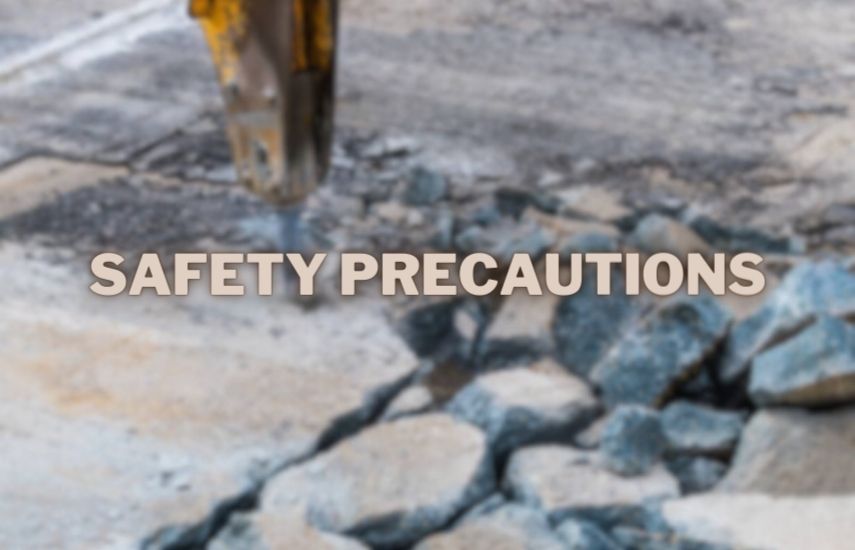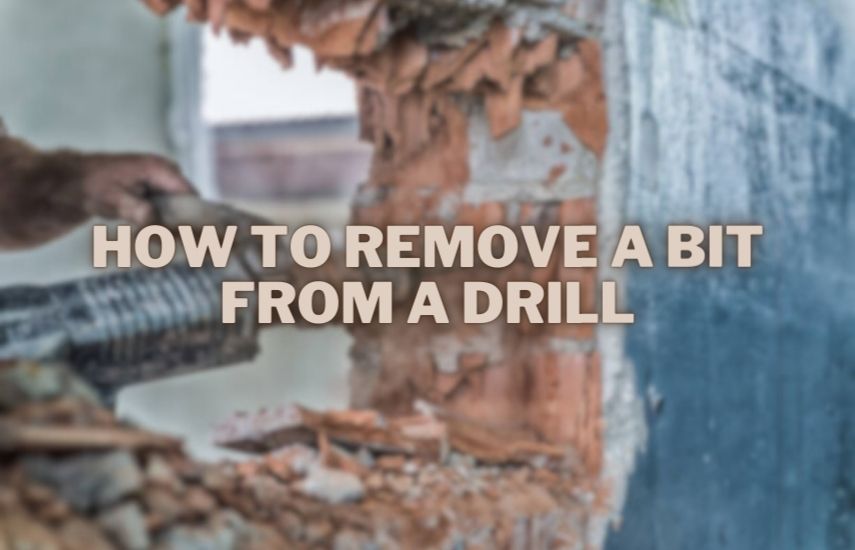Have you ever found yourself in a situation where you needed to remove a bit from your drill but didn’t know how to do it? Fear not, as we’re here to help you out.
How To Remove A Bit From A Drill? To remove a bit from a drill, first unplug the drill and loosen the chuck by turning it counterclockwise. Once the chuck is loose, simply pull the bit out of the chuck.
In this blog post, we’ll guide you through the steps on how to remove a bit from a drill with ease. So, whether you’re a DIY enthusiast or a professional handyman, keep reading to learn some useful tips and tricks.
Types Of Drill Chuck
Drill chucks are an essential part of any drill, and they come in different types to suit different drilling needs. One of the common tasks that require changing drill chucks is when you need to remove a bit from a drill.
Keyed Chucks
A keyed chuck is the most common type of drill chuck. It has a cylindrical body with three or four jaws that open and close using a key. The key is a small metal tool that fits into a slot on the chuck, allowing you to tighten or loosen the jaws around the drill bit.
Keyed chucks are easy to use, reliable, and can hold drill bits securely in place. They’re suitable for heavy-duty drilling applications that require high torque and precision.
Keyless Chucks
A keyless chuck is a type of drill chuck that doesn’t require a key to tighten or loosen the jaws. Instead, you can tighten or loosen the chuck by hand. Keyless chucks are more convenient to use than keyed chucks since you don’t need to carry a key around. They’re ideal for light to medium-duty drilling applications that require frequent bit changes.
SDS Chucks
SDS chucks are a specialized type of drill chuck used in rotary hammers and hammer drills. They have a unique mechanism that allows them to hold drill bits with SDS shanks. SDS shanks have a series of grooves that lock into the chuck, providing a secure grip and preventing the bit from slipping.
SDS chucks are ideal for drilling into concrete, masonry, and other hard materials. They’re available in two types: SDS-plus and SDS-max. SDS-plus chucks can hold drill bits up to 1/2 inch in diameter, while SDS-max chucks can hold drill bits up to 1-5/8 inches in diameter.
Safety Precautions

When it comes to removing a bit from a drill, it’s important to take certain safety precautions to avoid any accidents or injuries.
Unplugging The Drill
The first and foremost safety precaution you should take is to unplug the drill from the power source. This step is crucial to prevent any accidental activation of the drill while you are working on it. Make sure the drill is unplugged and the power cord is out of the way before you start removing the bit.
Wearing Appropriate Safety Gear
The next important safety measure is to wear appropriate safety gear. This includes safety glasses or goggles to protect your eyes from flying debris and dust, and gloves to protect your hands from sharp edges. You may want to consider wearing earplugs to protect your hearing from the loud noise produced by the drill.
Securing The Workpiece
Finally, it’s essential to secure the workpiece properly before removing the bit from the drill. This will prevent the workpiece from moving or spinning, which could cause serious injuries. You can use clamps or vices to secure the workpiece firmly in place.
If you’re working with a smaller workpiece, you can hold it firmly with one hand while using the other hand to remove the bit from the drill.
Removing A Bit From A Keyed Chuck
If you own a drill, you will inevitably need to remove the drill bit from the chuck. While it may seem like a straightforward task, it can be challenging if you don’t know how to do it properly. We will discuss the step-by-step process of removing a bit from a keyed chuck.
Locating the chuck key
The chuck key is a small, L-shaped tool that is used to tighten or loosen the chuck around the drill bit. It typically comes with the drill and is usually kept in a dedicated compartment on the drill itself. If you cannot locate the chuck key, you can purchase a replacement at your local hardware store or online.
Inserting the key into the chuck
Once you have located the chuck key, you need to insert it into the hole located on the side of the chuck. The hole is usually located near the base of the chuck, and the key will fit snugly inside it. Make sure to insert the key all the way in until it stops.
Turning the key counterclockwise
With the key inserted into the chuck, you can now turn it counterclockwise to loosen the chuck and release the drill bit. It’s essential to keep a firm grip on both the drill and the chuck key while you’re turning the key to avoid any accidents. You may need to turn the key a few times to fully release the drill bit.
Removing a Bit from a Keyless Chuck

When you’re done drilling a hole, it’s important to remove the bit from the drill to prevent any damage to the bit or the chuck. Removing a bit from a keyless chuck is a simple process that can be accomplished with a few easy steps.
Grasping the chuck with one hand
The first step in removing a bit from a keyless chuck is to firmly grasp the chuck with one hand. You should position your hand around the chuck, with your fingers gripping it securely. It’s important to note that you should never attempt to remove a bit from a spinning drill. Always make sure the drill is turned off and unplugged before attempting to remove the bit.
Setting the drill to reverse
After you’ve securely grasped the chuck, the next step is to set the drill to reverse. This will loosen the grip of the chuck and allow you to remove the bit. On most drills, you can switch between forward and reverse by simply turning a switch or button located near the trigger. If you’re not sure how to switch your drill to reverse, consult your user manual.
Squeezing the trigger gently
Once you’ve set the drill to reverse, the final step is to gently squeeze the trigger while holding onto the chuck. This will loosen the bit and allow you to remove it from the chuck. It’s important to apply gentle pressure to the trigger, as squeezing too hard can cause the chuck to spin too fast and potentially damage the drill or bit. Once the bit is loose, simply pull it out of the chuck.
Removing a bit from a keyless chuck is a simple process that can be accomplished in a few easy steps. By following these steps and exercising caution, you can safely remove a bit from a drill and prevent any damage to your equipment. Remember to always turn off and unplug your drill before attempting to remove a bit, and consult your user manual if you’re unsure of how to switch your drill to reverse.
Inspecting and Storing Drill Bits
Drill bits are an essential tool for anyone who regularly works with wood, metal, or any other material that requires drilling. To ensure that your drill bits are always in good working condition, it’s crucial to inspect them regularly for damage and wear. Proper storage of your drill bits can help prevent them from becoming dull or damaged over time.
Checking for damage and wear
Before using your drill bits, it’s important to inspect them for any signs of damage or wear. Here are a few things to look for when inspecting your drill bits:
- Check the tip of the bit for any chips or cracks.
- Look for any signs of wear along the cutting edge of the bit.
- Check the shank of the bit for any bends or other deformities.
Cleaning and lubricating the bits
Regular cleaning and lubrication can help extend the life of your drill bits and keep them functioning at their best. Here are some tips for cleaning and lubricating your bits:
- After each use, wipe the bits clean with a cloth to remove any debris or residue.
- If the bits are particularly dirty, you can soak them in a solution of warm water and dish soap to help loosen grime.
- Dry the bits thoroughly after cleaning to prevent rust from forming.
- To lubricate your bits, you can use a small amount of oil or lubricant on the cutting edge and shank. This can help reduce friction and prevent the bits from overheating during use.
Storing bits in a proper case
Proper storage of your drill bits can help prevent them from becoming dull or damaged over time. Here are some tips for storing your bits:
- Use a dedicated case or container to store your drill bits. This can help prevent them from becoming lost or damaged.
- Make sure the case or container is labeled with the size and type of each bit, so you can easily find the one you need.
- Store your bits in a dry, cool place to prevent rust from forming. Avoid storing them in humid or damp environments.
- Consider investing in a bit sharpener to keep your bits sharp and in good working condition. Sharpening your bits regularly can help extend their lifespan and save you money in the long run.
Step By Step

Removing a bit from a drill may seem like a simple task, but it can be daunting for beginners or those who have never done it before. Fortunately, with the right tools and a few simple steps, you can remove a bit from your drill quickly and easily.
Identifying the type of chuck
Before you can remove a bit from your drill, you need to identify the type of chuck that is holding it in place. The chuck is the component that secures the bit to the drill, and it can either be a keyless or keyed chuck. A keyless chuck is the most common type of chuck and can be tightened or loosened by hand, while a keyed chuck requires a special key to loosen or tighten the chuck.
To identify the type of chuck on your drill, look at the collar or sleeve that surrounds the chuck. If it has a metal collar with three or four holes in it, you have a keyed chuck. If the collar is smooth and lacks any holes, you have a keyless chuck.
Following the appropriate removal method
Once you have identified the type of chuck on your drill, you can follow the appropriate removal method. For a keyless chuck, you can simply hold the drill with one hand and use the other hand to turn the collar counterclockwise to loosen the chuck. Once the chuck is loose, you can pull the bit out of the chuck.
For a keyed chuck, you will need to locate the chuck key that came with your drill. Insert the key into one of the holes on the collar and turn it clockwise to tighten the jaws around the bit. Then, turn the key counterclockwise to loosen the chuck and remove the bit.
Inspecting and storing the removed bit
After you have removed the bit from your drill, take a moment to inspect it for any damage or wear. Check the cutting edge for dullness or nicks and ensure that the shank is straight and undamaged.
Once you have inspected the bit, store it in a safe place where it won’t get lost or damaged. You can use a dedicated bit storage case or a labeled container to keep your bits organized and easy to find when you need them. Proper storage will help extend the life of your bits and keep them in good working condition for your next project.
Conclusion (How To Remove A Bit From A Drill)
Removing a bit from a drill is easy. Start by switching off the drill and releasing the chuck by turning it anticlockwise. Then, gently remove the bit from the chuck. Voila!
Removing a drill bit may seem like a simple task, but it’s crucial to do it properly to ensure both safety and efficiency in future projects. By taking the time to follow the correct procedures for removing a bit and maintaining it afterward, you’ll be able to keep your equipment in top condition and avoid costly repairs or replacements.
In addition to safety concerns, properly removing and maintaining your drill bits can also improve the efficiency of your work. A dull or damaged bit can slow down your work and cause unnecessary frustration, while a well-maintained bit can help you complete your tasks more quickly and accurately. By following the tips and techniques outlined you can ensure that your drilling projects are as safe and efficient as possible.









